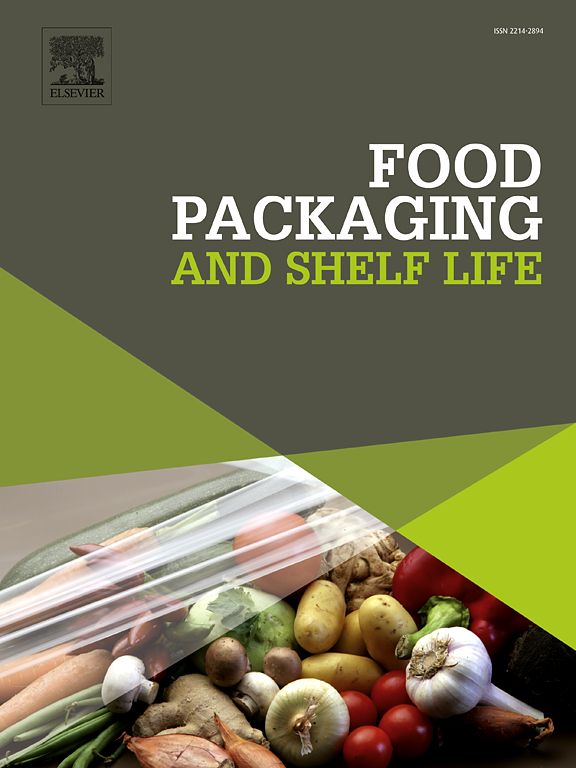Development of temperature-sensitive and controlled-release PLA-based film for strawberry preservation
IF 10.6
1区 农林科学
Q1 FOOD SCIENCE & TECHNOLOGY
引用次数: 0
Abstract
To achieve slow-release of lemon essential oil (LEO) for enhanced preservation performance, a polylactic acid (PLA) based electrospun film incorporated with temperature-sensitive poly (N-isopropylacrylamide) (PNIPAAm) was developed, characterized and applied for postharvest strawberry storage. We found that the addition of PNIPAAm and LEO not only did not affect the mechanical properties but also endowed the film with good antibacterial properties. The growth of Escherichia coli, Staphylococcus aureus and Botrytis cinerea in the PNIPAAm/LEO/PLA groups was significantly (P < 0.05) inhibited compared to that in the control group. PNIPAAm/LEO/PLA film controlled-release LEO with cumulative oil release rates of 24.41 % and 66.82 % at 20 °C and 40 °C after 24 h incubation, showing 39.50 % and 9.91 % elevation in comparison with LEO/PLA film. During the strawberry storage period, the PNIPAAm/LEO/PLA treatment resulted in a significantly reduced decay rate and weight loss, delayed firmness, and total soluble solid deterioration. In conclusion, the PNIPAAm/LEO/PLA film effectively controlled the release of LEO and delayed strawberry quality deterioration at various storage temperatures, thereby extending its shelf life.
草莓保鲜用温敏控释pla薄膜的研制
为了实现柠檬精油(LEO)的缓释,提高草莓的保鲜性能,研制了一种聚乳酸(PLA)基电纺丝薄膜,并对其进行了表征,并将其应用于草莓采后保鲜。我们发现PNIPAAm和LEO的加入不仅不影响薄膜的力学性能,而且赋予薄膜良好的抗菌性能。与对照组相比,PNIPAAm/LEO/PLA组大肠杆菌、金黄色葡萄球菌和灰霉病杆菌的生长均受到显著抑制(P <; 0.05)。PNIPAAm/LEO/PLA膜控释LEO,在20°C和40°C孵卵24 h后,累积油释放率分别为24.41 %和66.82 %,与LEO/PLA膜相比,分别提高了39.50 %和9.91 %。在草莓贮藏期间,PNIPAAm/LEO/PLA处理显著降低了草莓的腐烂率和失重率,延缓了草莓的硬度和总可溶性固形物的变质。综上所述,PNIPAAm/LEO/PLA薄膜有效地控制了LEO的释放,延缓了草莓在不同储存温度下的品质劣化,从而延长了草莓的保质期。
本文章由计算机程序翻译,如有差异,请以英文原文为准。
求助全文
约1分钟内获得全文
求助全文
来源期刊

Food Packaging and Shelf Life
Agricultural and Biological Sciences-Food Science
CiteScore
14.00
自引率
8.80%
发文量
214
审稿时长
70 days
期刊介绍:
Food packaging is crucial for preserving food integrity throughout the distribution chain. It safeguards against contamination by physical, chemical, and biological agents, ensuring the safety and quality of processed foods. The evolution of novel food packaging, including modified atmosphere and active packaging, has extended shelf life, enhancing convenience for consumers. Shelf life, the duration a perishable item remains suitable for sale, use, or consumption, is intricately linked with food packaging, emphasizing its role in maintaining product quality and safety.
 求助内容:
求助内容: 应助结果提醒方式:
应助结果提醒方式:


